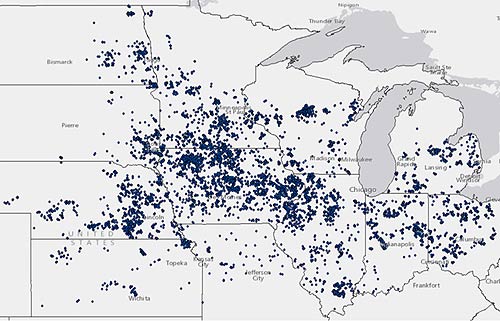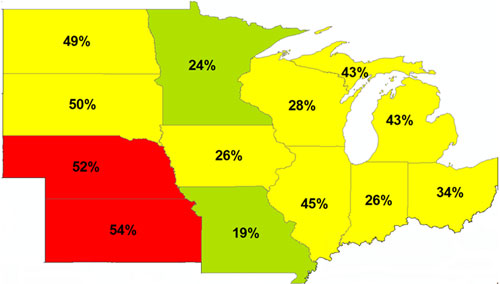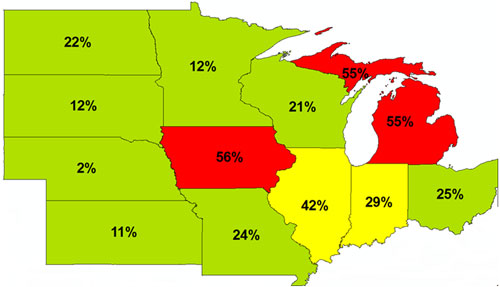Authors: Marissah Schulte and Andy Heggenstaller
The foregoing is provided for informational use only. Please contact your Pioneer sales professional for information and suggestions specific to your operation. Results are based on observations made at 8,925 locations through June 30, 2016. Multi-year and multi-location is a better predictor of future performance. Do not use these or any other data from a limited number of trials as a significant factor in product selection. Product responses are variable and subject to a variety of environmental, disease, and pest pressures. Individual results may vary.
Encirca® services are provided subject to the terms and conditions of purchase which are part of the purchase documents.
Encirca® services provides estimates and management suggestions based on statistical and agronomic models. Encirca services is not a substitute for sound field monitoring and management practices. Individual results may vary and are subject to a variety of factors, including weather, disease and pest pressure, soil type and management practices.
ENCIRCA® SERVICES ARE PROVIDED "AS IS" AND PIONEER MAKES NO REPRESENTATION OR WARRANTY, EXPRESS OR IMPLIED, CONCERNING THE USE OF ENCIRCA SERVICES OR THE RESULTS OBTAINED THEREFROM, INCLUDING WITHOUT LIMITATION IMPLIED WARRANTIES OF MERCHANTABILITY OR FITNESS FOR A PARTICULAR PURPOSE, WHICH ARE HEREBY DISCLAIMED. IN NO EVENT WILL PIONEER OR ITS AFFILIATES BE LIABLE TO YOU OR ANY OTHER PERSON FOR ANY LOSS OR DAMAGE RELATING TO YOUR USE OF OR RELIANCE UPON ENCIRCA SERVICES.
®, ™, SM Trademarks and service marks of DuPont, Dow AgroSciences or Pioneer, and their affiliated companies or their respective owners. © 2018 PHII.


